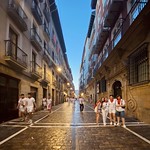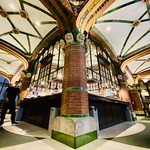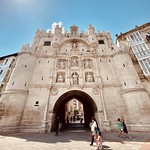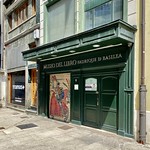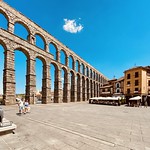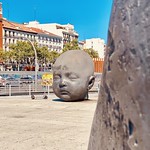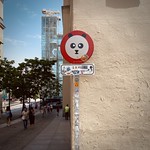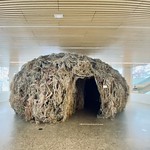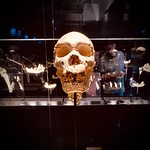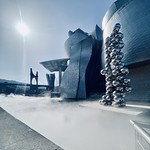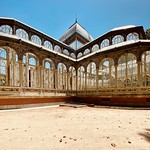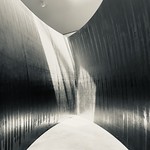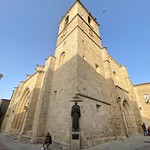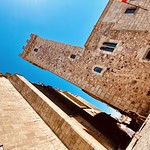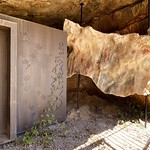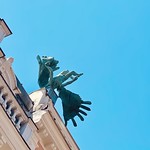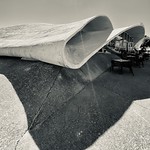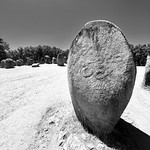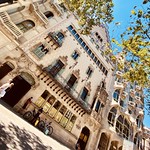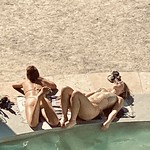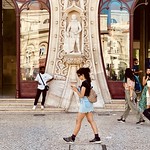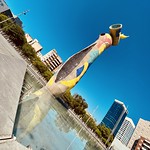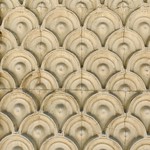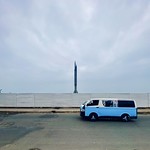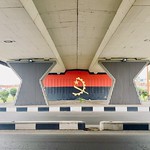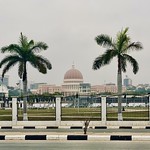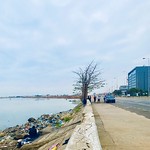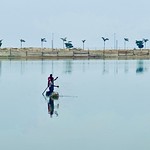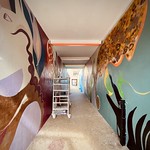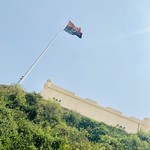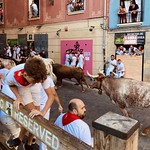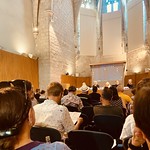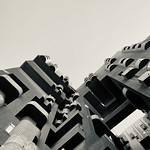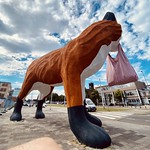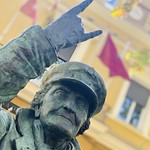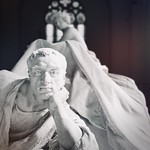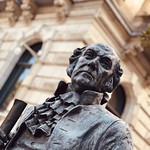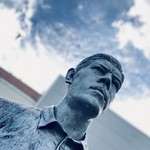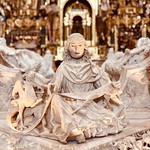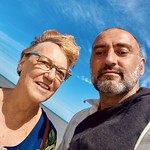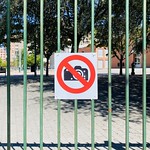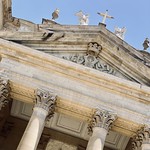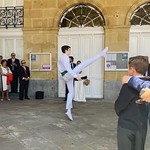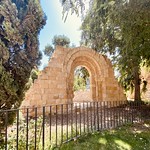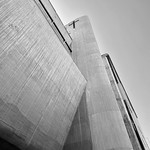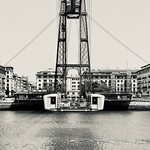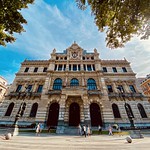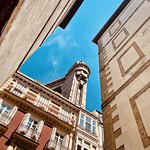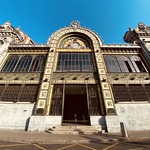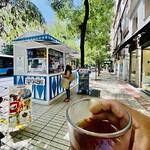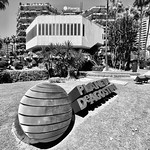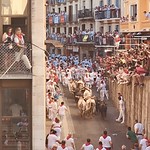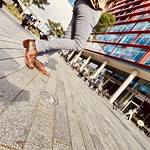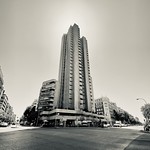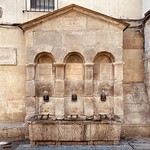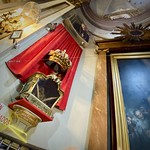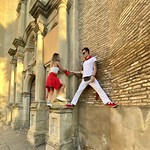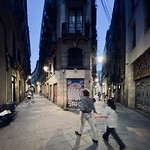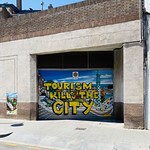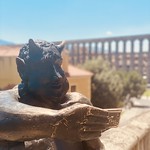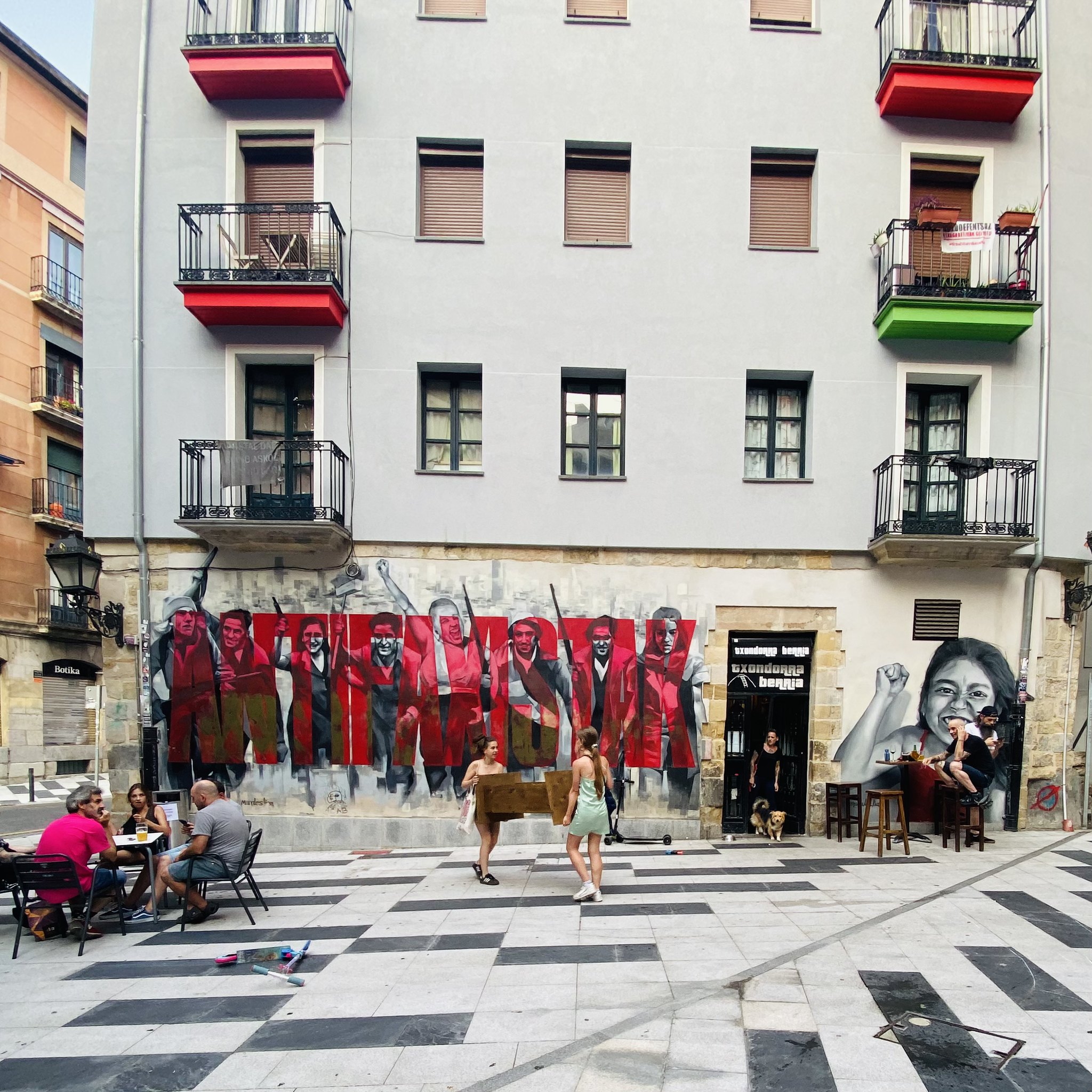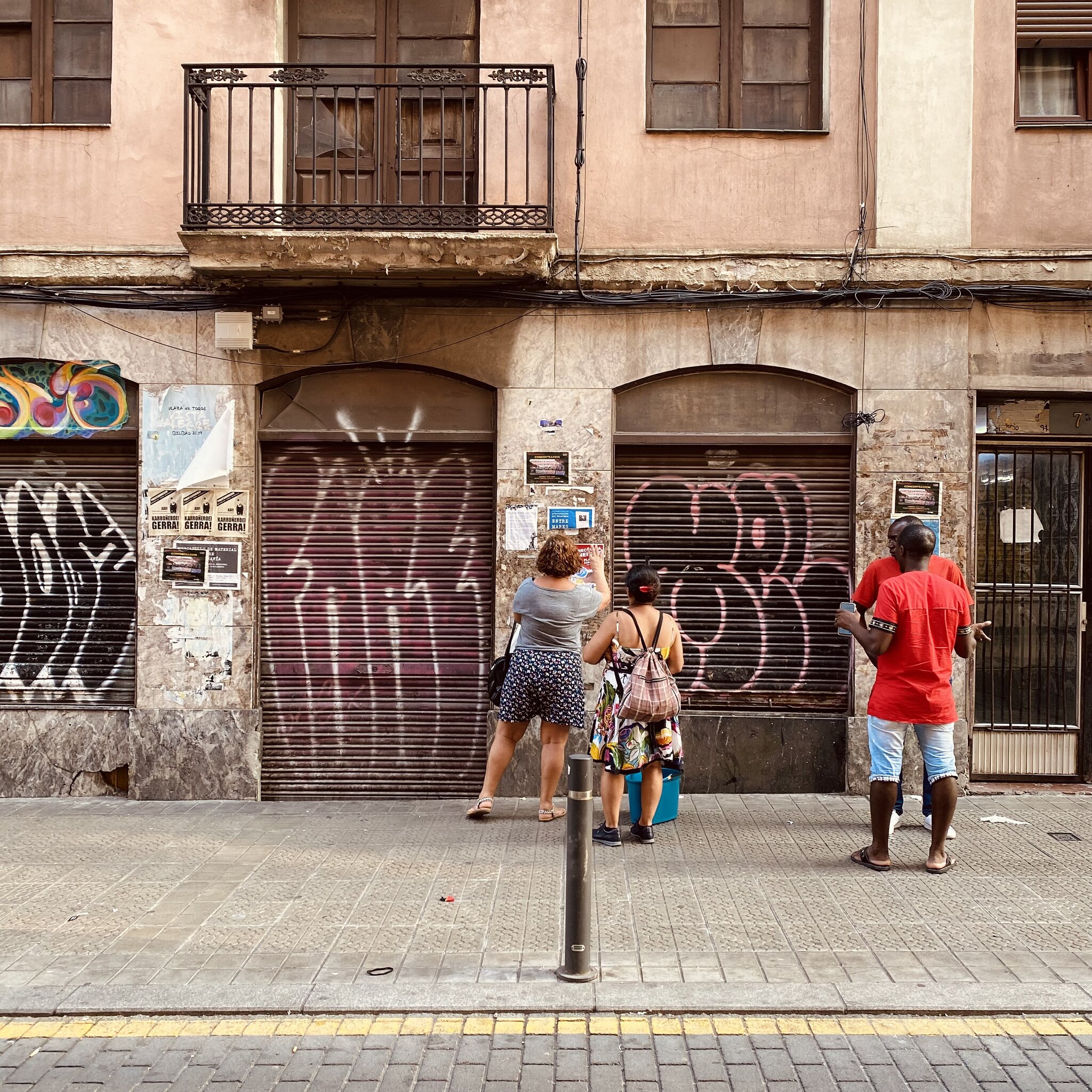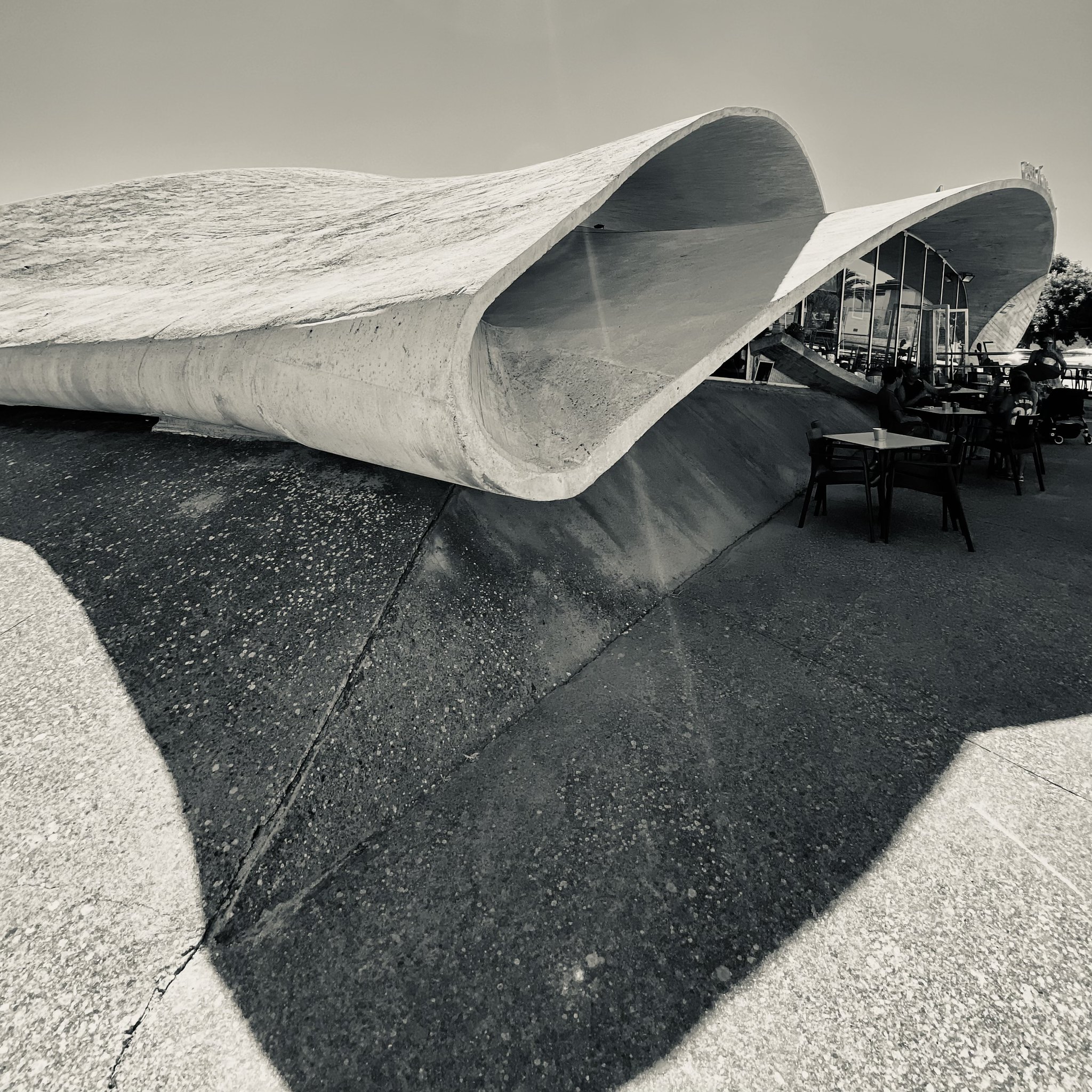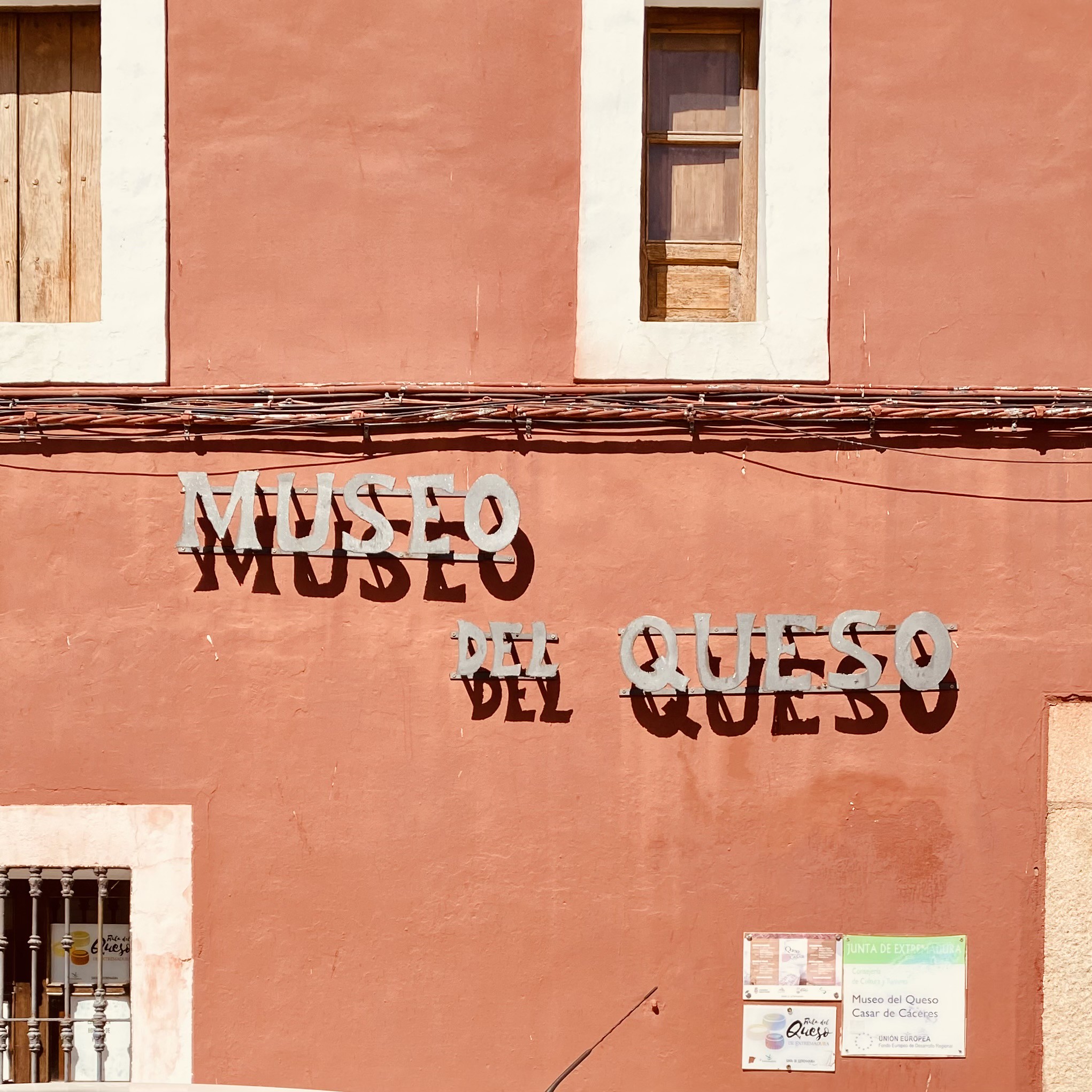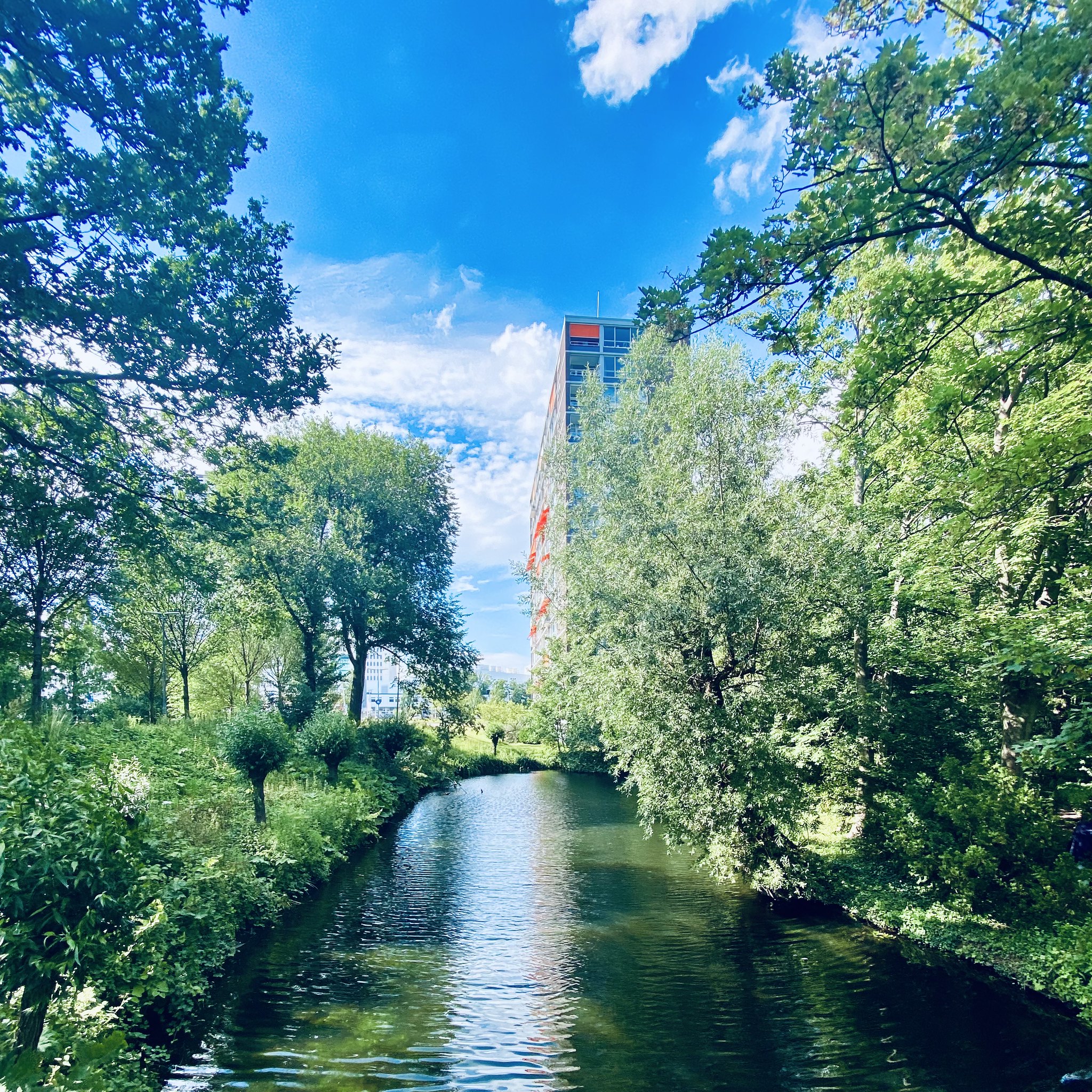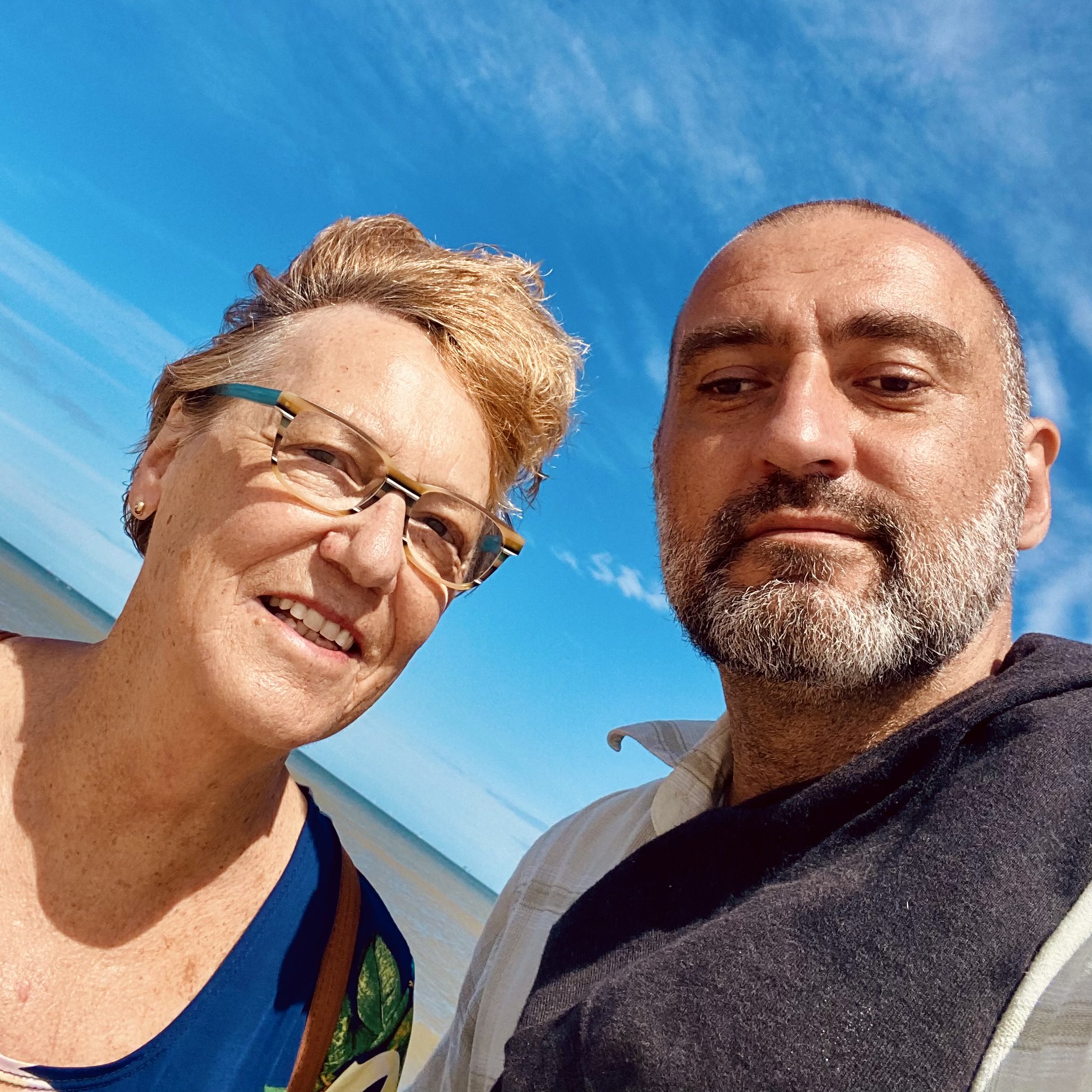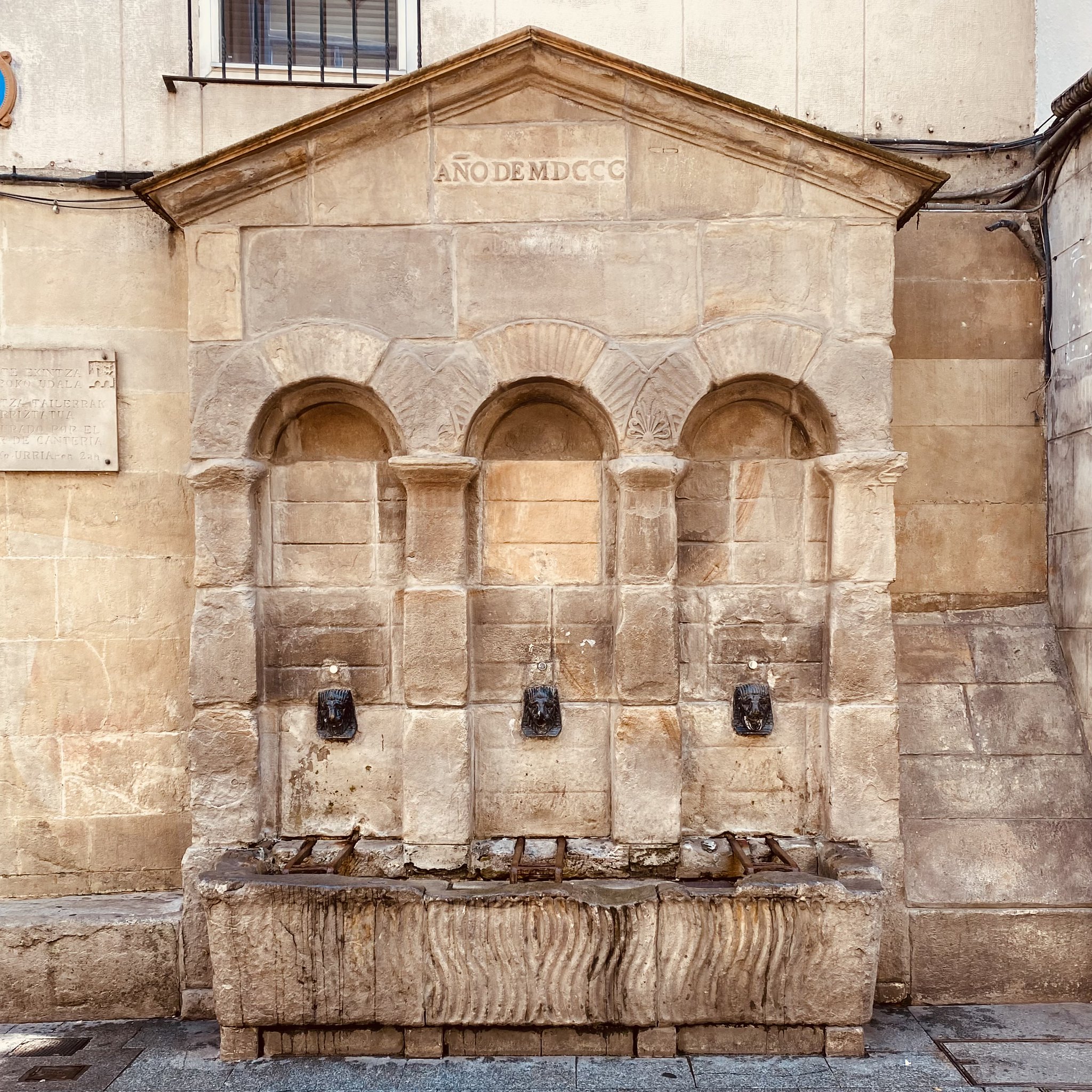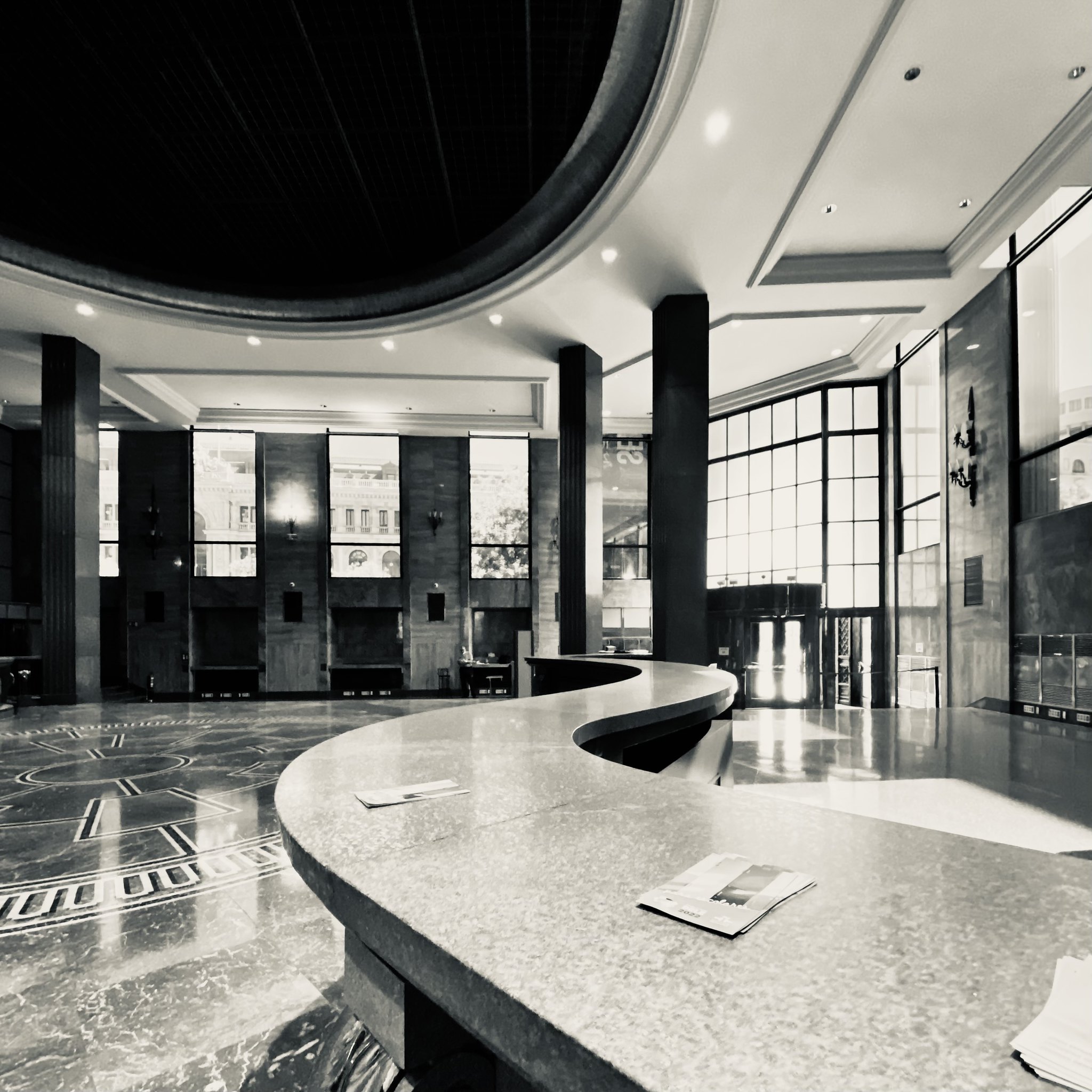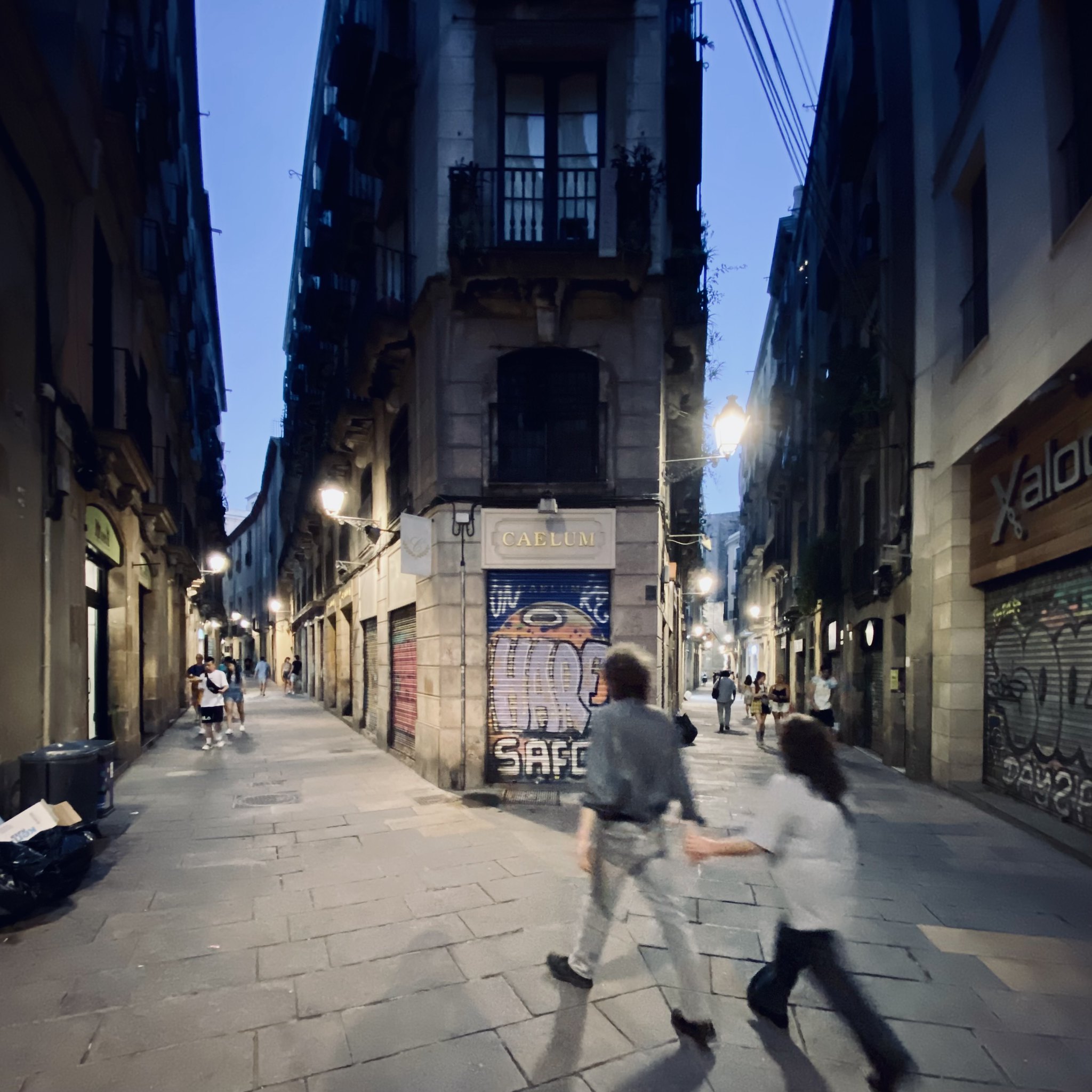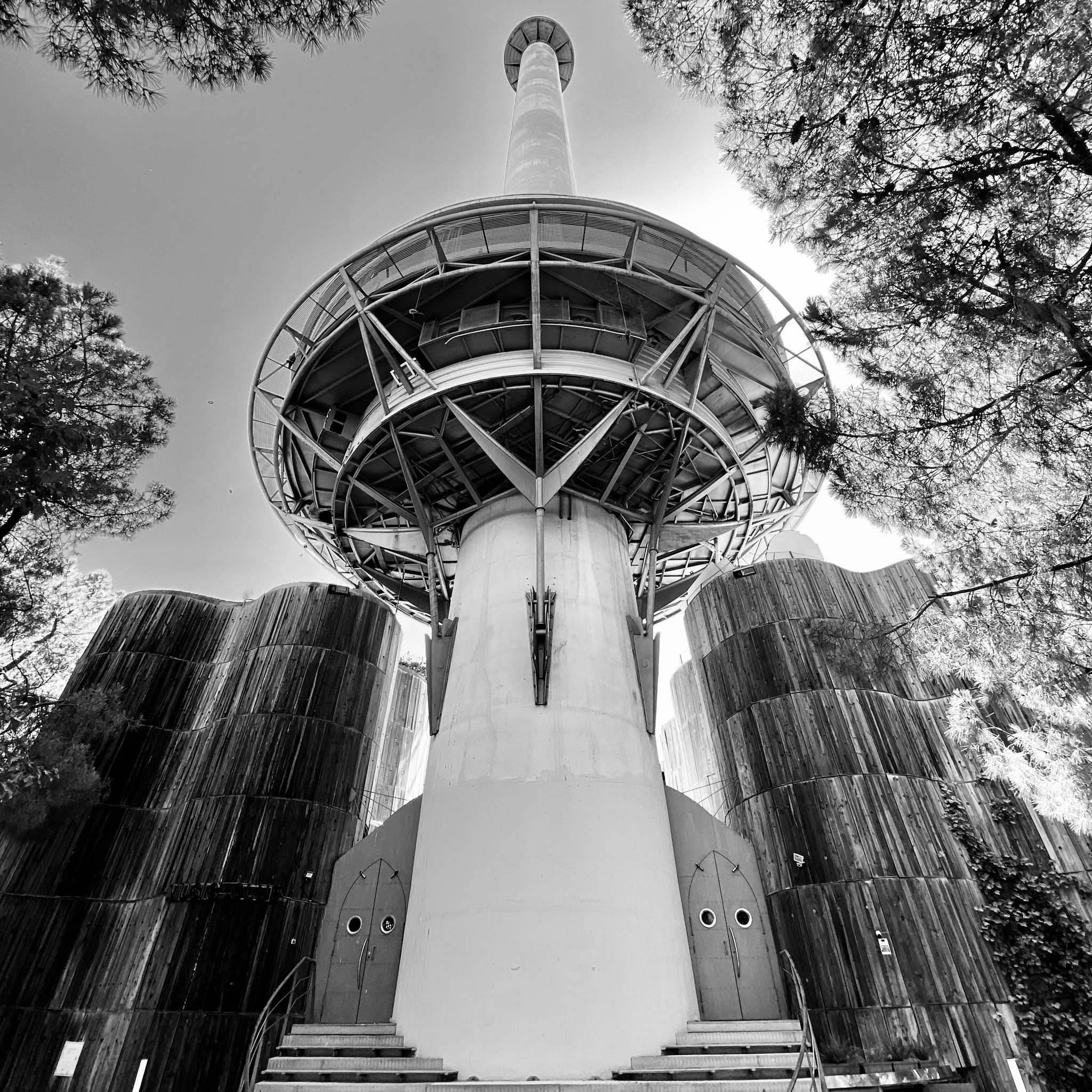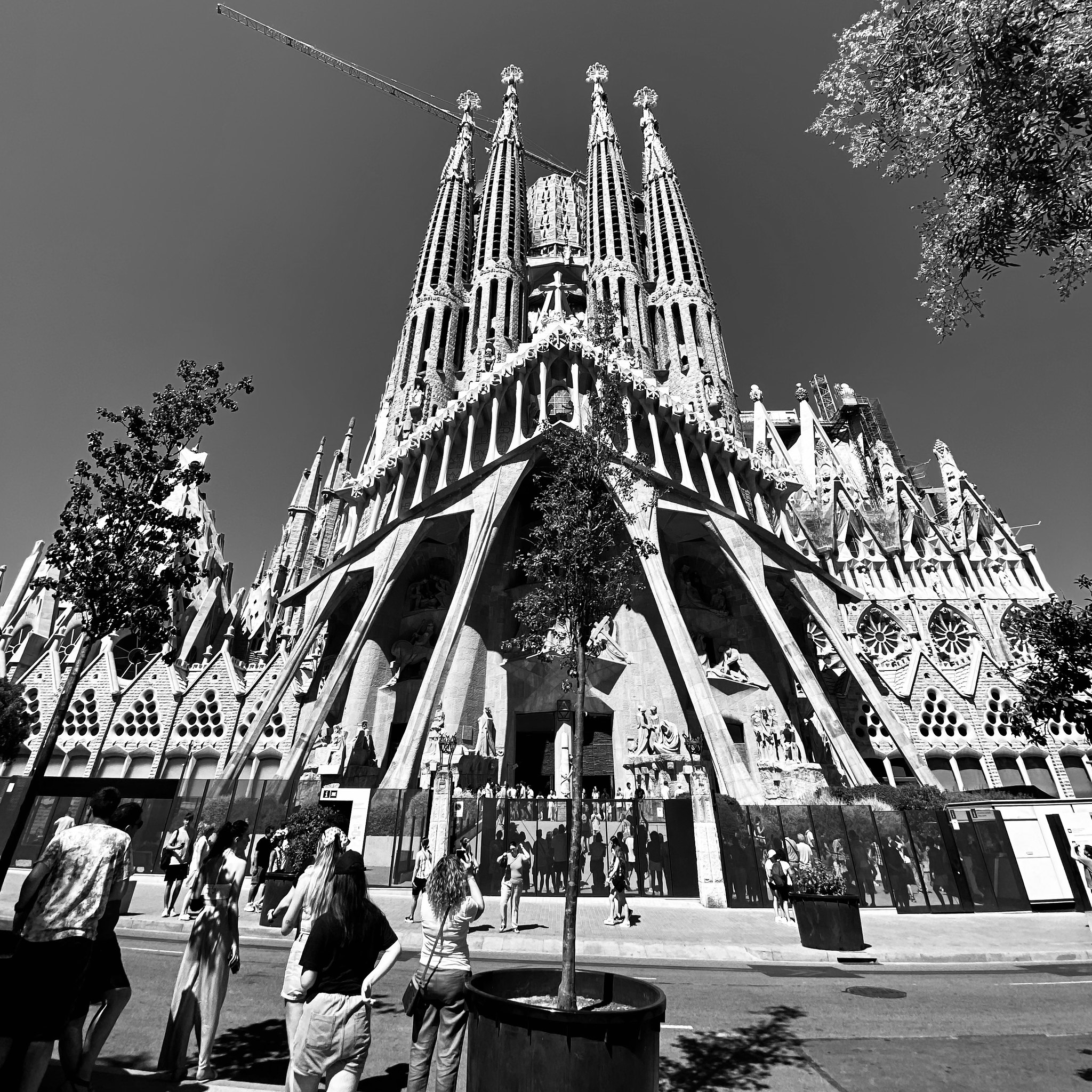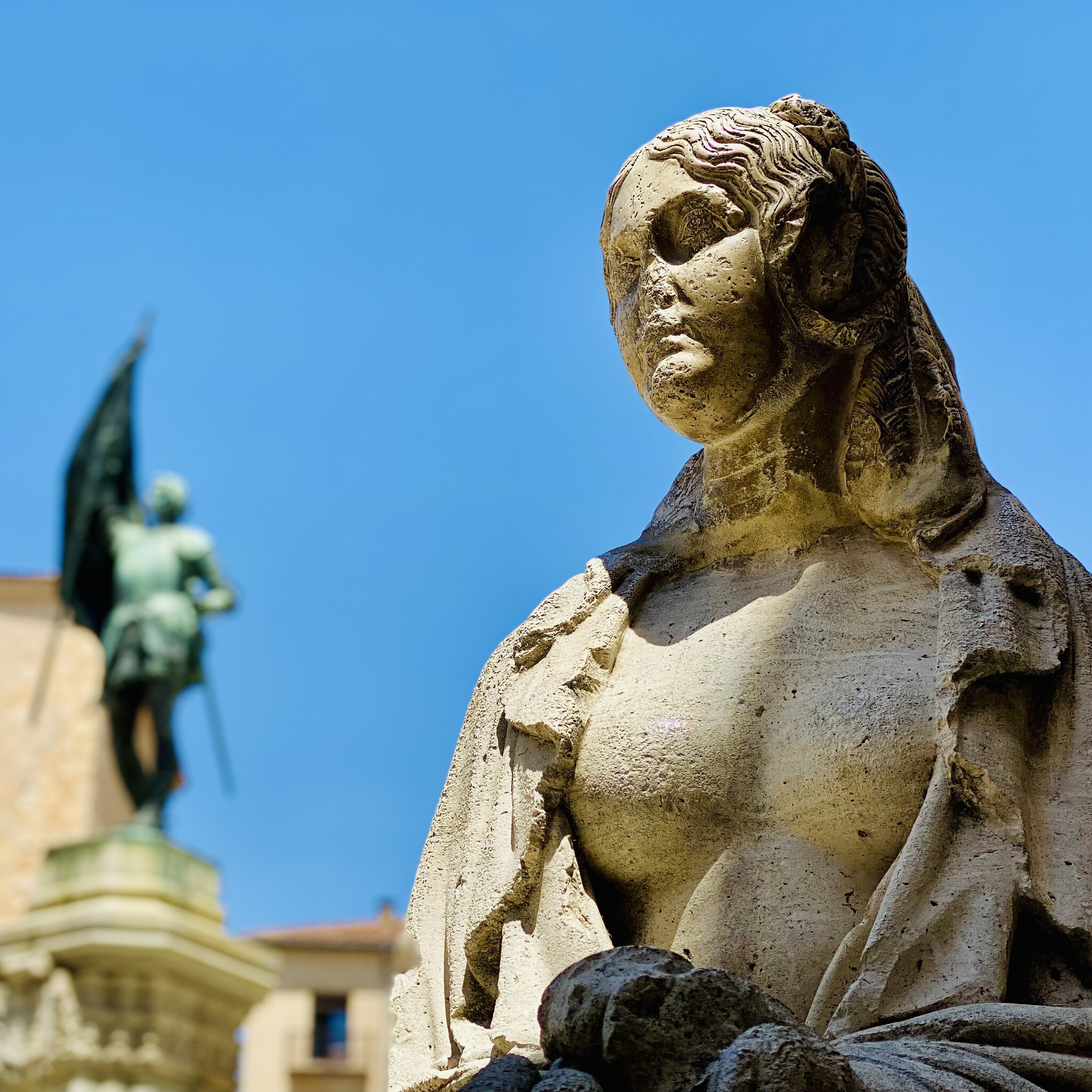And with a dash of Luanda
After two weeks in Portugal, Natalia had to face the real world, and head back to Brazil to get back to work.
I did a quick jump to The Netherlands, to say hi to my mom, and followed that up with a month-long visit to Spain. For pleasure, but also because our European visit nicely worked together with the dates of the walking conference Walking Art and Relational Geographies, in the towns of Girona, Vic, and Olot, in north-eastern Spain, which I was very happy to attend, representing walk · listen · create.
After the conference, I made my way back to Lisbon, from where I was going to fly home a good month after having said goodbye to Natalia. Not direct, but, as a kind of cost-saving measure, via Luanda, Angola.
My first stop on this route was Barcelona. There, in my hostel, young US tourists, in two groups of around 40 kids each, got an extensive introduction on what it means to travel in Barcelona, and, by extension, Europe.
They were ‘backpacking’ for 35 days, apparently together, very organised. The talks had a vibe, somewhat like an American introduction to some MLM scheme; too positive, fake sincerity. But the kids were lapping it up.
“In Europe, they don’t care too much for AC.”
“Ice cubes are hard to find.”
“You will be surprised that, sometimes, you will have to pay for using a toilet.”
My next stop was Pamplona, home of the running of the bulls. Accommodation was limited and very expensive. So, I took a night bus from Barcelona, which saw me arrive very early in the morning. The running of the bulls happens every day for a good week, in the early mornings. So, even with only one booked night in the city, I was able to attend two bull runs.
I arrived at 4am, and the streets were a mess, but already started to get busy. Everyone was wearing white and red, the ‘official’ colors of the festival, and lots of twenty somethings were sleeping off their hangovers all over town.
Before getting to the center, I walked on to the city walls to get a rather stunning view of the lower quarters of the town, slowly waking up under the early sunrise, a rooster repeatedly announcing the start of the day.
I was hoping to grab a coffee somewhere, but the places that were open catered to the party goers who had survived the night.
At the start of the run, some two hours early, a few dozen revellers were already waiting for the event to begin. As were the bulls.
The route is lined with wooden fences, creating a corridor for the bulls, and people, to run through, while also providing opportunities to escape.
To participate, all you need to do is stand in the street when the bulls start running. Then, it’s your call as to what to do next; you can start running, or just hop through the fence and get out of the way.
Near the end of the route, close to the bull arena, where the day’s bulls end up, and will suffer death in a bullfight later in the day, Red Cross staff was busying themselves to get ready.
A Twitch streamer was recording the proceedings, when another streamer showed up, with a significantly more elaborate collection of tech. They battled it out, Twitch style.
I settled in, on the edge of one of the fences, near the start, close to the Museo de Navarra, where someone thought they recognised me as a radio personality.
With just an hour to go, the streets were packed. Workers cleared the street with brooms and a leaf blower.
The sun rose, the letters of the museum basked in a golden hue.
At 45 minutes before the start, loudspeakers started to proclaim a host of notices, ‘rules for the running of the bulls’. ‘Rucksacks are strictly forbidden’ (when running). “It is forbidden to remain in the central lane, unless it is intended to participate in the running of the bulls.” “The use of cameras, or recording equipment, whilst running, is forbidden.”
The vast majority of those remaining in the street are men. There are a handful of women.
Above the crowd, cameras are installed on ropes, able to follow the bulls as they rush through the street.
At 30 minutes before the start, a number of access points along the path were closed, in order to create safe spaces for the runners to escape to. As a consequence, I was kicked out of my spot.
I left for the very start, where the first 70 meters or so were kept free of runners by security.
With perhaps 10 minutes to go, a few men in green, with sticks, or staffs, showed up. Some people applauded. They were going to be running after the bulls, hitting them with the sticks to keep them taking a break.
Then, it was getting noticeably quieter, until it was almost silent. With five minutes to go, the crowd started a song, repeating it 2 minutes later, and then again just before 8am.
Fireworks sounded, the bulls were released, and started running. A few had cowbells. The crowd went wild. Some, in the street, started running, other escaped immediately, some got hit, a corridor formed, the bulls ran through it.
In seconds, it’s over.
Then a second batch of bulls was released, but they just leisurely plodded on.
The bulls run to the arena, where, in the evening, they’ll be killed in a series of bull fights.
Perhaps 15 minutes after the run was over, I was in a bar getting breakfast, where I saw the replay of the run on television. I spotted myself in a corner, and noticed that many runners were hit, fell over, or ran into each other. I also saw the men in green, hitting the bulls from behind.
The whole event is, very literally, a spectacle, and exploited as such.
After a day’s hike to a nearby abandoned fort, in the evening, I checked out the bullpen at the start of the run, where workers were getting ready for the next day, and found the bulls were going to be herded into their enclosure.
At 21:45, fireworks were lit, and fifteen minutes later, in a matter of seconds, the bulls ran by, into their pen.
The second morning I again attended the spectacle, but now from much more up close, on the edge of the central part of the corridor.
The announcements started, the crowd sang, the fireworks went off, the bulls flashed by, the run was over.
In Bilbao, walking from the bus station to the center, I was surprised at how much the city reminded of Dublin.
The Guggenheim was a bit of a disappointment, and very busy; The art was a bit stale, the building surprisingly less impressive than I was expecting.
There had been a recent controversy over a particular painting, which, according to news reports, was now on display with a disclaimer. However, when I found the painting, there was no disclaimer to be seen.
In the nearby port, a ‘flying ferry’ connects the two sides of the river. The ‘bridge’ is a World Heritage Site, and was built when the port was much more prominent.
Now, the two sides of the river are sleepy tourist attractions.
I spent several hours around the bridge. Not once did a ship enter or leave the river.
In Portugalete on the western bank of the river, I stumbled upon a wedding party, fresh from the altar. On the steps of a municipal building, the newly weds were in the center of a half circle of attendees. Facing them, a young man, dressed in white with a green sash around his waist, was dancing to a flute and drum, in a style that reminded me of Irish step dancing.
After each short song and performance, the crowd cheered and applauded.
In Burgos, my hotel was quite a bit out of the center. The caves outside of town, a world heritage site for their archeological discoveries of early man, are practically impossible to visit with no transport of your own, meaning I was limited to the associated museum in town.
Visiting the town of Segovia, for its aqueduct, I also check out the town’s cathedral, which has several ‘tapestry rooms’. Besides actual tapestries, it also shows off elaborate vests worn by bishops and priests. Essentially, these are tubular tapestries.
In Madrid, for the second time on this trip, I stumbled upon a monument to those who died during the COVID pandemic.
After an excellent night of drinking and eating with a local Dutch Hasher, my last of seven days in Madrid was recovery, celebrated with a wine tasting, joined by the same Dutch Hasher.
To take it easy afterwards, I finally went to the Prado, free during the last two hours of every day, to find a long, long queue, where, at the end, two staff of the museum were directing patrons where to queue up, making a snake around several corners.
Thankfully, it was mostly shade, as temperatures were reaching 40 degrees every day. So hot, that my iPhone refused to charge over 80%.
The town of Cáceres has a mix of Roman, Gothic, Moorish, and Spanish-Christian architecture. There’s also a cheese museum in honour of a famous local cheese, nearby.
For me, the highlight was the local museum, with bronze-age stelae, showing an artistic connection to ancient Scythian art, as well as perhaps some pre-Colombian art from the Americas.
From Cáceres to Évora, in Portugal, I took a Flixbus, the company that seems to have annihilated Eurolines.
The passengers are not a tourist crowd; mostly East Asian, south Asian, and black. I got the impression they’re all working migrants.
The driver, Portuguese, is stressed out, or pretends to be. I’m reminded of when I once took the bus from Brussels to London, which was a chaos of tourists and migrants, with transport personnel severely understaffed, and migrants trying to stow away in the luggage compartment under the bus.
In the center of Évora, a Greek-style temple to Diana is the city’s piece de resistance, but the town is also a bit sedate.
To keep myself busy, I rented a bike to cycle to some sights in the country side, megalithic structures, and a kind of Stonehenge.
The heat, hills, and gravel roads made the 50km bike ride tough. And, on a downhill, a corner, shifting gravel, I made a nice somersault, and ate dirt.
Back in Lisbon, I staid at what is the closest I’ve seen in Europe to a Japanese pod hotel.
A large number of Brazilians live in the hostel, while trying to make a living in the city. Perhaps half a dozen of them deliver for UberEats.
To get myself back to Brazil, I was flying TAAG, the National Airline of Angola, saving me about half the fare as compared to Natalia’s direct flight a month earlier.
But it also meant I was going to have a 14 hour stopover in Luanda, for which I was told I was required to get a transit visa, something that only barely went well, taking eight days at the consulate in New York, back in June.
It wasn’t quite clear whether I would also need to meet regular entry requirements, which would mean that, after Angola had started requiring a negative COVID test again only a week before, I had to get a test in Lisbon.
In Luanda, however, it seemed that neither the immigration documentation I had had to fill in online, nor the COVID test, not the visa, were necessary at all. Everyone in transit was chaperoned through the airport in a way that saw them bypass immigration.
But, I had also purposefully gotten my visa to be able to leave the airport and go for a walk. So, I headed out, and was stamped in.
A while later, I was stamped in.
So, it appears I hasn’t needed a visa. With the visa, I still didn’t need the COVID test, nor the documentation I had needed to procure online.
At 7:30 in the morning, Luanda was fairly quiet, fairly clean, fairly poor, but also quite accessible. Though finding a place to exchange money was a challenge.
Banks were not changing money, or rather, not the ones I visited. A little shop wanted to give a horrible rate, and I settled on a street exchanger, next to a Dia supermarket, a chain popular in Brazil and Portugal, giving me a terrible, but not horrible, exchange rate. As Visa, not MasterCard, was king, I needed the cash.
The supermarket had a popular in-house cafe which sold sweet croissants of the brand name ‘Hungaro’.
Their in house cafe, very popular with locals and foreigners alike, had decent coffees and pasteis de nata, the signature Portuguese sweet.The supermarket had a popular in-house cafe which sold sweet croissants of the brand name ‘Hungaro’.
The city is fairly modern, with lots of modernist apartment buildings, moderately dilapidated, and, at times, a dash of Portuguese colonial architecture, hidden between bland facades.
The absolute unit of Luanda is the afrofuturist memorial to Augustino Neto, the father of the nation.
The memorial is a multi pronged concrete needle pointing to the heavens, halfway between the new, mostly pink, parliament, and the shore.
Both sides have an embossed star, and the structure is surrounded by a walled empty park where taking photos is not allowed.
Walking into the monument, I was asked to pay 200 kwanza, and requested to wait 15 minutes, in case a group would form to join me on the guided visit. No one showed up, as no one had during the 20 minutes or so I had enjoyed the sea breeze on the monument’s steps. I got a private tour of the mausoleum.
Angola is well known for its corruption, particularly under the previous president, when the president’s daughter became the richest woman in Africa, on the back of oil revenues.
Another consequence of that was the hyper development of a strip of land, a peninsula, in front of the capital. Or so I thought. This area had fairly recently been cleared of favelas, and in my mind’s eye, I had envisioned something resembling a Dubai in waiting.
Not so; projects on the strip of land seemed, at best, partially under construction.
In my mind’s eye, this step resembled an African Dubai, and I’m sure I’ve seen photos claiming this tongue of lalla to be such.
Then, I had a lovely lunch at the nearby main post office, or perhaps what once was the main post office, walked over to check out Lenin Square, and headed back to the airport.
It was time to go home.
